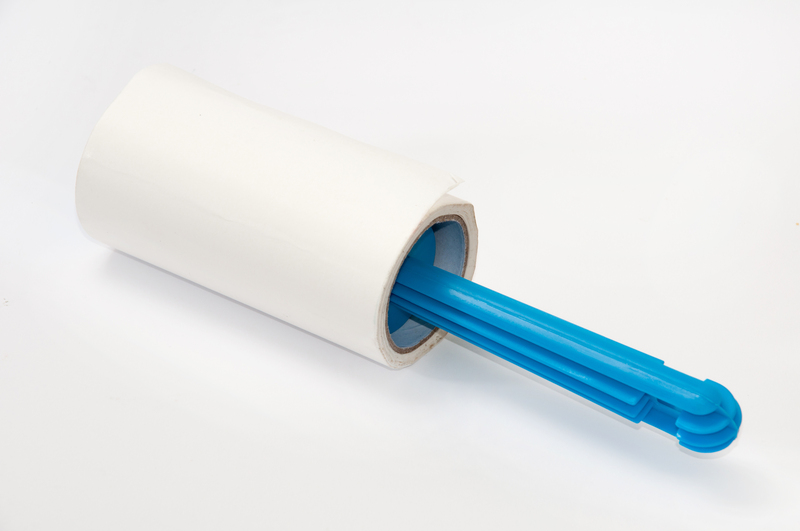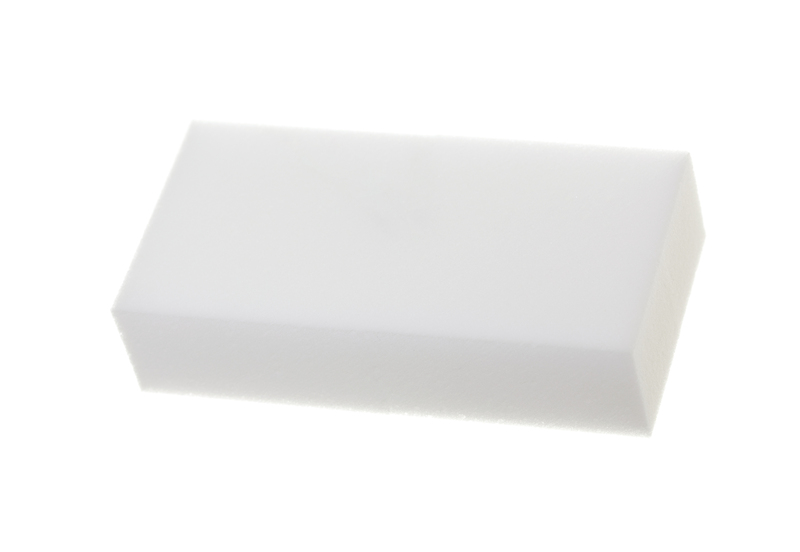Healthy Spaces: Prioritizing Air Quality in Homes and Offices
Posted on 17/09/2025
Healthy Spaces: Prioritizing Air Quality in Homes and Offices
In today's fast-paced urban lifestyle, most people spend almost 90% of their time indoors. Whether at work or home, the quality of the air we breathe has a profound impact on our health, wellbeing, and productivity. With increasing awareness about allergies, respiratory issues, and airborne viruses, prioritizing indoor air quality (IAQ) is no longer a luxury--it's a necessity. This comprehensive guide explores why and how you should make healthier spaces by improving air quality in both residential and office settings.

Why is Indoor Air Quality So Important?
Air quality affects everyone. Numerous studies have shown that poor indoor air leads to health issues such as headaches, fatigue, allergies, asthma attacks, and even long-term respiratory illnesses. The World Health Organization (WHO) estimates that indoor air pollution causes millions of premature deaths each year. Prioritizing air quality in homes and offices delivers immediate and long-term health benefits.
- Short-term effects: Headaches, eye, nose, and throat irritation, dizziness, and excessive fatigue.
- Long-term effects: Respiratory diseases, heart disease, reduced productivity, and worsened allergies.
- Vulnerable groups: Children, elderly, and individuals with pre-existing health conditions are at higher risk.
Ensuring clean air indoors is crucial for healthier living and working environments.
Main Sources of Indoor Air Pollution
Understanding what impacts indoor air environments is a vital first step. The following are among the most common sources of poor air quality in our homes and workplaces:
- Volatile Organic Compounds (VOCs): Emitted from paints, cleaning agents, air fresheners, and office equipment.
- Biological Pollutants: Mold spores, bacteria, viruses, animal dander, and dust mites.
- Combustion Byproducts: Carbon monoxide and nitrogen dioxide from cooking, candles, or space heaters.
- Particulate Matter (PM): Fine dust, fibers, and particles from construction, carpets, and office printers.
- External Pollutants: Outdoor air pollutants seeping indoors due to poor ventilation.
Home Environments: Steps to Enhance Air Quality
1. Ventilation: The Key to Freshness
Proper ventilation is the cornerstone of healthy indoor spaces. Opening windows regularly, using exhaust fans in kitchens and bathrooms, and maintaining clean air registers ensures that stale air and pollutants are expelled, bringing in fresh outdoor air.
- Install mechanical ventilation systems where natural ventilation is insufficient.
- Regularly clean or replace air filters in HVAC systems.
- Use range hoods when cooking to remove byproducts of combustion.
2. Control Humidity and Moisture
High humidity fosters the growth of mold and dust mites--a recipe for unhealthy indoor air. Aim to keep indoor humidity between 30% and 50%.
- Use dehumidifiers in damp areas like basements.
- Repair leaks promptly to prevent mold.
- Ensure proper drainage around the foundation of your house.
3. Minimize Chemical Pollutants
Be selective with household products to maintain clean indoor air. Switch to non-toxic or naturally derived cleaning agents and avoid aerosol sprays.
- Choose low-VOC or zero-VOC paints and materials.
- Store chemicals, paints, and cleaning supplies outside the living areas.
- Avoid smoking indoors or burning candles excessively.
4. Houseplants: Nature's Air Purifiers
Certain houseplants can naturally absorb toxins and boost oxygen levels, contributing to a healthier home environment. Popular choices include:
- Spider Plant (Chlorophytum comosum)
- Peace Lily (Spathiphyllum)
- Snake Plant (Sansevieria trifasciata)
- Aloe Vera
- English Ivy (Hedera helix)
While houseplants offer benefits, they are not a substitute for proper ventilation and cleaning routines.
5. Regular Cleaning Routines
Dust and allergens settle on carpets, furniture, and drapes. Regular housekeeping practices are key to prioritizing residential air quality:
- Use vacuum cleaners equipped with HEPA filters.
- Wash bedding and curtains in hot water regularly.
- Minimize clutter to reduce dust-collecting surfaces.
Office Environments: Air Quality Matters at Work
Indoor air quality significantly impacts employee productivity, satisfaction, and overall health. Poor air leads to increased absenteeism and reduced cognitive function, making it a top priority for business owners and facility managers.
1. Optimize Office Ventilation Systems
Many modern office buildings recirculate air to save on energy costs, but without proper filtration, contaminants can build up. Consider these measures for cleaner air at work:
- Upgrade ventilation systems with medical-grade HEPA or MERV filters.
- Set up scheduled inspections and cleaning for air conditioning units.
- Introduce energy recovery ventilators (ERVs) for improved fresh air exchange.
2. Invest in Air Purifiers
Freestanding air purification devices--especially those with HEPA filters and activated carbon--greatly enhance indoor air quality in shared spaces. Smart air monitors can track air quality in real time and alert staff if conditions deteriorate.
3. Address Office-Specific Pollutant Sources
- Printers and copiers: Emissions from office equipment can contain harmful ozone and fine particles. Isolate equipment in a well-ventilated room.
- Furniture and finishes: Many office furnishings off-gas VOCs. Opt for low-emitting, green-certified products where possible.
- Shared kitchens and restrooms: Ensure adequate ventilation to prevent lingering odors and humidity buildup.
4. Create a No-Smoking Policy
Tobacco smoke is a potent source of indoor air pollution. Enforce a strict no-smoking policy indoors and provide designated outdoor smoking zones away from entrances and windows.
5. Encourage Employees to Prioritize Cleanliness
- Regular cleaning schedules for desks and communal areas.
- Offer guidance on maintaining personal workspace hygiene.
- Disinfect touchpoints--like door handles and shared equipment--frequently.
The Role of Smart Technology in Managing Indoor Air
The smarter approach to air quality integrates advanced sensors and connected devices. Modern air monitors provide real-time readings of particulate matter, CO2 levels, humidity, and VOC concentrations. Some systems can automatically trigger ventilation or purification when unsafe levels are detected.
- Benefits: Data-driven insights empower homeowners and facility managers to take instant action and maintain optimal indoor air quality.
- Accessibility: Many solutions are user-friendly, with mobile apps or voice assistant compatibility for ease of control.
Air Quality Certification & Green Building Standards
For both homes and offices, seeking independent certifications can guarantee healthy indoor air standards. Look for:
- WELL Building Standard: Focuses on health and wellbeing, including air quality metrics.
- LEED (Leadership in Energy and Environmental Design): Awards points for improved indoor air.
- RESET Air Standard: Real-time performance-based evaluation for offices.
Homes can work towards the EPA's Indoor airPLUS label for comprehensive indoor air quality measures.
Emerging Trends: Moving Beyond Filtration
1. Biophilic Design
Integrating nature into interiors--via green walls, natural ventilation, and daylight--has shown to:
- Improve psychological wellbeing
- Enhance indoor air circulation
- Lower stress levels for occupants
2. Active and Passive Air Cleaning
- Photocatalytic Oxidation: Breaks down pollutants at a molecular level using UV light.
- Ionization: Causes particles to clump together for easier filtration.
- Natural building materials: Such as clay, lime, and certain woods, which can actively absorb toxins.
Addressing Common Myths About Indoor Air Quality
Myth 1: New buildings always have better air quality.
Reality: New buildings can contain high levels of VOCs due to new furniture, paint, and finishes--a phenomenon known as "sick building syndrome".
Myth 2: You can always detect poor air by smell.
Reality: Many harmful pollutants, such as carbon monoxide and radon, are odorless and colorless.
Myth 3: Outdoor air is always cleaner.
Reality: In high-pollution areas, bringing in unfiltered outdoor air can worsen indoor air quality. Using filtration is essential.
Practical Checklist: Improving Air in Your Home or Office
- Test for radon, especially in ground-level rooms.
- Ensure all fuel-burning appliances are properly vented and maintained.
- Promote natural ventilation while monitoring outdoor pollution levels.
- Replace or clean HVAC filters regularly.
- Eliminate or minimize use of chemical-based cleaners and fragrances.
- Monitor humidity and use dehumidifiers or humidifiers as required.
- Consider professional indoor air quality assessment for persistent issues.

The Benefits of Prioritizing Air Quality
Embracing air quality improvements yields significant gains for homes and businesses alike:
- Improved Health: Fewer respiratory issues and allergy symptoms.
- Better Productivity: Cleaner air has been linked to improved cognitive function and workplace performance.
- Lower Absenteeism: Reduces illness-related absences.
- Increased Comfort: Less dust, fewer odors, and more consistent air temperatures.
Conclusion: Make Air Quality a Daily Priority
Healthy spaces start with the air you breathe. From simple habits like opening windows to integrating advanced air purification systems, every step counts towards maintaining a healthier home or office. By understanding pollutants, promoting regular cleaning, investing in smart technologies, and considering green building standards, you safeguard your well-being and that of those around you.
Prioritizing indoor air quality isn't just about comfort--it's about health, productivity, and long-term peace of mind. Make it a foundation for your living and working environment, and breathe easier knowing you're creating a truly healthy space.




